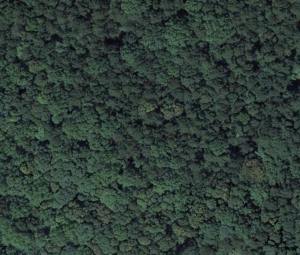
Well, Raleigh Nature is a year old – and haven’t we been through a lot, and boy, have I learned a lot! This blog is just getting started in ways – more broad coverage of ALL of Raleigh ITBL, pages on invasive species, turtles and record trees, and addressing concerns and questions from readers, are all on my list. But it was a good year and I’m very happy with the blog and most grateful for the responses.
Above is a Google Earth snapshot of what this blog is really all about – lost in wilderness inside the beltline – in this case, the woodlot off the greenway at Atlantic Ave and Hodge Road, which was recently destroyed. Let’s enjoy them while they’re here! Below are my Raleigh Nature favorites for 2008.
**************
My favorite place to sit on a log.
Amidst the large tree stands that line Buckeye Trail, the oldest and easternmost section of Raleigh’s greenways threads its way beside the deep meandering banks of Crabtree. Here we are looking at the spot where Marsh Creek marsh spills over into Crabtree after a heavy rain. Nice spot for animals to come down for a drink, and above is the marsh skyline to scour for hawks and herons.
***********
My favorite spots to drown worms.
Lassiter Mill, above and below the dam, is a wonderful place to fish with children, for turtle food, or even to fool around with your flyrod.
************
My favorite place to take a guest.
Yates Mill, with the old millworks, the gorgeously built new center displaying its history, a marked tree i.d. walk, a high ridge, a marshy meadow, and a fishing deck, has all anyone could desire from a nature outing. It’s well outside the beltline but I love it too much to exclude it.
***************
My favorite place to meadow tramp.
The privately owned section of the old pecan farm surrounding Jones Lake is eventually doomed but is the best spot for seeing foxes, deer and footprints of those and more in the same trip. Once it’s developed, I’ll have to settle for the county park across the highway.
************
My favorite place to jump rocks.
Dix and the greenway that connects it to Centennial and Washington School represents a fantastic dog walk, frisbee throw, pecan pick, or walk of any length you desire. Rocky Branch, displaced by the Western Boulevard extension, has retained some of its good character.
************
My favorite place to watch birds
Raleigh Swamp, which used to be irregular but has been made permanent by the damming effects of Raleigh Boulevard, has a large consistent and varied population of breeding and visiting birds.
************
My favorite place to listen to water.
Jaycee park has a rock waterfall that, at two feet, is perhaps the largest inside the beltline. It certainly is the prettiest of which I know.
***********
My favorite place to photograph.
This must be it, because this is my favorite photograph so far. This creek borders the greenway which runs south beside Longstreet off Sawmill in north Raleigh. I’ll keep working on finding, and shooting, one even better. Ya’ll have a great new year!! Love, John
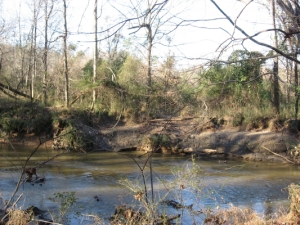

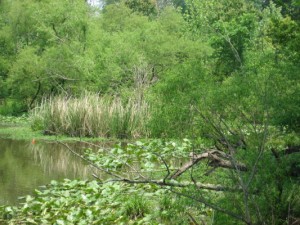

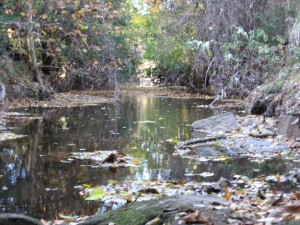
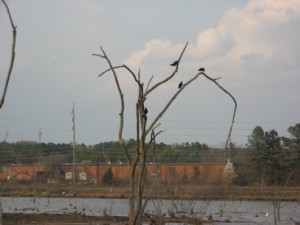
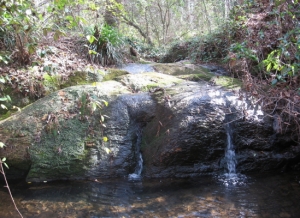
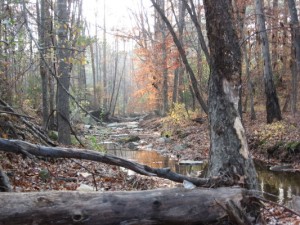





 Kevin, program director for PFI, holds a northern water snake from the Davidson River. We measured stream quality parameters and took a tour of the trout hatchery, which attracts
Kevin, program director for PFI, holds a northern water snake from the Davidson River. We measured stream quality parameters and took a tour of the trout hatchery, which attracts 